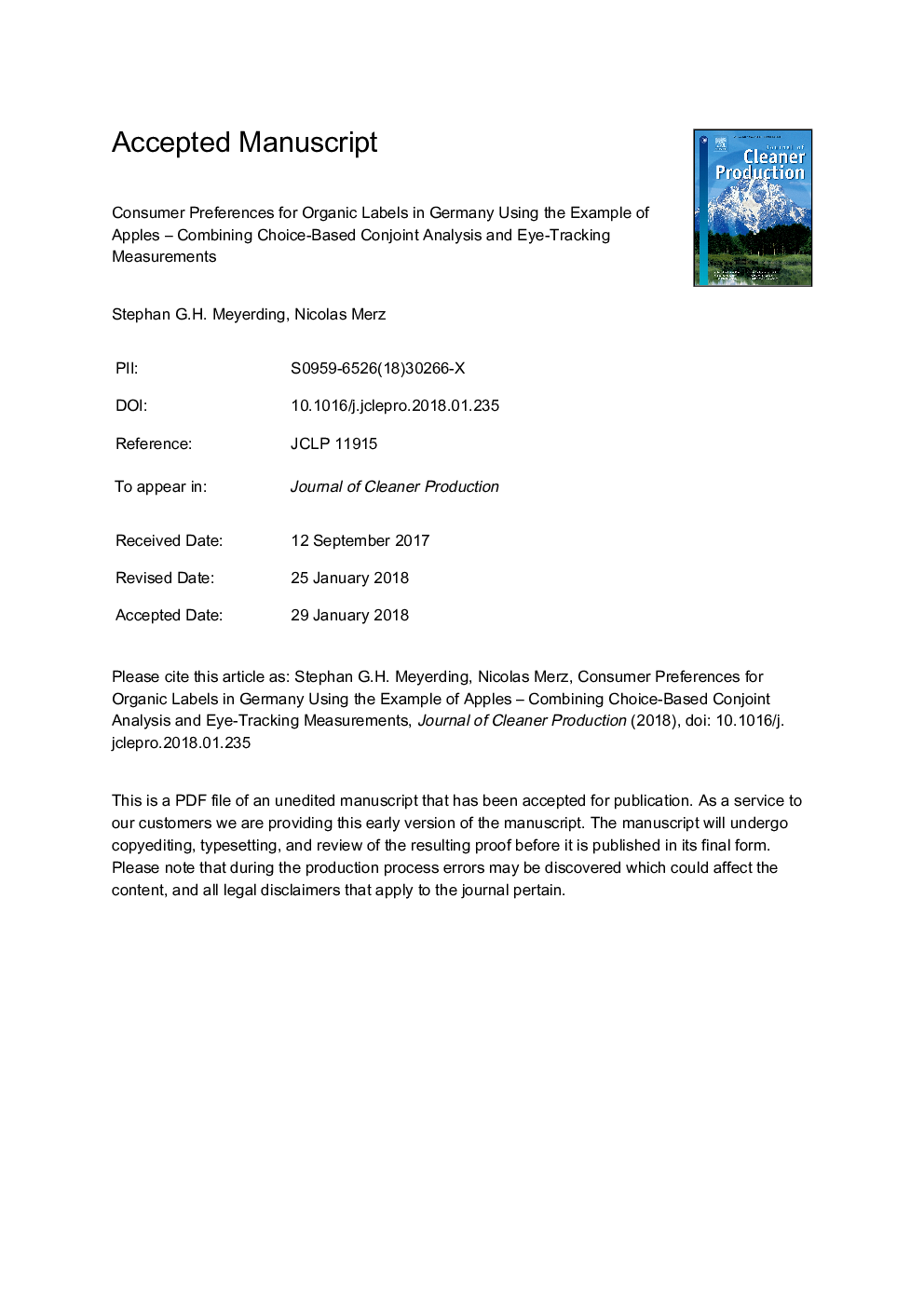| Article ID | Journal | Published Year | Pages | File Type |
|---|---|---|---|---|
| 8097797 | Journal of Cleaner Production | 2018 | 42 Pages |
Abstract
Organic food products are considered as credence goods. Hence, organic labels are important visual stimuli for consumers to determine how a good was produced. Therefore, this study aims to contribute to the literature by examining the visual attention patterns and preferences of consumers in a choice experiment by measuring their eye movements using eye-tracking technology and comparing the results with the findings from choice-based conjoint analysis (CBCA) and other stated preference methods. For this reason, 73 consumers participated in an experiment in 2017 in Germany. The combination of eye-tracking and CBCA can help to overcome some major limitations of choice experiments. For example, low levels of a attribute's part-worth utility can be caused by the participants low preference regarding that attribute or that he/she just haven't viewed the attribute. Our findings indicate that consumers who gain greater utilities from specific attributes of a good also attend to them visually to a greater extent. The study's results also suggest that a combination of stated preference methods with eye-tracking technology has the potential of solving some major limitations of these methods such as social desirability, memory limitations and lack of visual attention to specific product characteristics.
Related Topics
Physical Sciences and Engineering
Energy
Renewable Energy, Sustainability and the Environment
Authors
Stephan G.H. Meyerding, Nicolas Merz,
